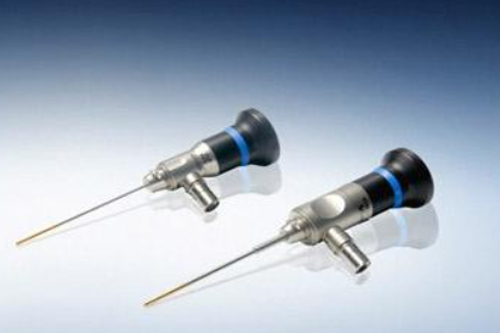Brain and ENT Clinic – Dr Lalit Mahajan In Nagpur & Dr Rachna Gangwani Mahajan In Nagpur
Otoendoscopy Ear Endoscopy

Symptoms and Indications for Otoendoscopy
Ear Pain: Otoendoscopy can help identify the cause of ear pain, such as infections, foreign bodies, or structural issues.
Hearing Loss: It is used to examine the ear canal, eardrum, and middle ear structures to assess the cause of hearing loss.
Ear Discharge: Otoendoscopy helps in visualizing the source and characteristics of ear discharge, which could be due to infections, trauma, or other issues.
Tinnitus (Ringing in the Ears): The procedure may be used to investigate the cause of tinnitus, such as abnormalities in the ear structures.
Vertigo or Dizziness: Conditions affecting the inner ear, such as Meniere’s disease, can be assessed using otoendoscopy.
Foreign Body Sensation: If a person feels like there is something stuck in the ear, otoendoscopy can help identify and locate any foreign bodies.
Recurrent Ear Infections: Chronic or recurrent ear infections may be visualized to determine the extent of the infection and guide treatment.
Treatment of Otoendoscopy Ear Endoscopy
Ear Infections (Otitis Media):
- Treatment: Antibiotics may be prescribed to treat bacterial infections. In some cases, antifungal medications may be used for fungal infections.
Cholesteatoma:
- Treatment: Surgical removal is often necessary to address cholesteatomas. This procedure, called tympanoplasty or mastoidectomy, involves removing the abnormal growth and repairing any damage to the ear structures.
Otosclerosis:
- Treatment: Surgical options such as stapedectomy or stapedotomy may be considered to improve hearing in cases of otosclerosis.
Tympanic Membrane Perforation:
- Treatment: Small perforations may heal on their own, while larger perforations may require surgical repair, known as tympanoplasty.
Impacted Earwax:
- Treatment: Earwax removal may be performed during otoendoscopy using gentle suction or specialized instruments. In some cases, ear drops may be prescribed to soften the wax before removal.
Foreign Bodies in the Ear:
- Treatment: Removal of foreign bodies is typically done during otoendoscopy using specialized instruments. It’s important to avoid attempting removal at home, as this can lead to further complications.
Eustachian Tube Dysfunction:
- Treatment: Management may involve addressing underlying causes, such as allergies or infections. In some cases, procedures like balloon dilation of the Eustachian tube may be considered.
Other Conditions:
- Treatment: The specific treatment plan depends on the diagnosis made during otoendoscopy. It may involve medications, surgical procedures, or other interventions tailored to the individual’s condition.
Advantages
Visualization: Otoendoscopy provides a clear and magnified view of the ear structures, allowing for more accurate diagnosis and treatment planning.
Minimally Invasive: The procedure is minimally invasive and is usually well-tolerated by patients.
Real-Time Imaging: The real-time imaging capability of the endoscope allows healthcare professionals to see the ear structures directly during the examination.
